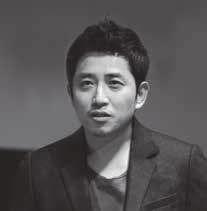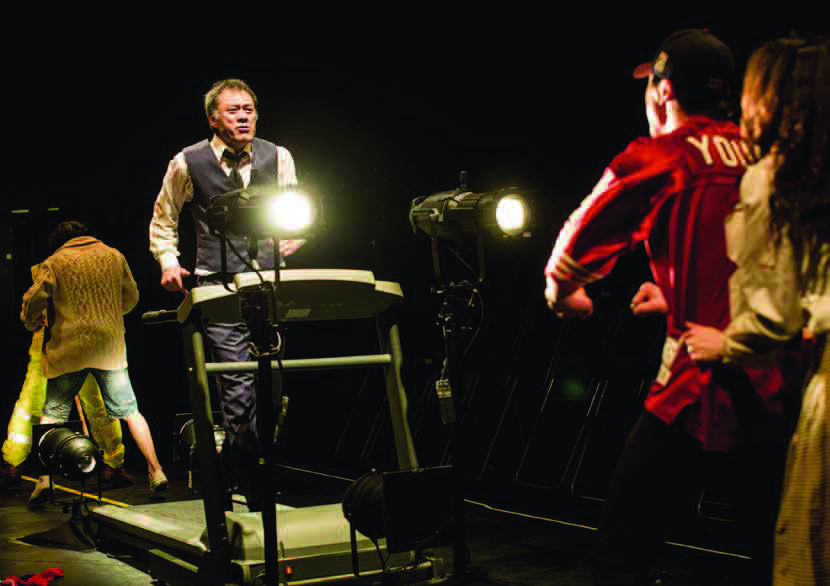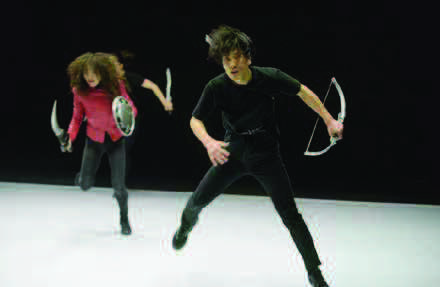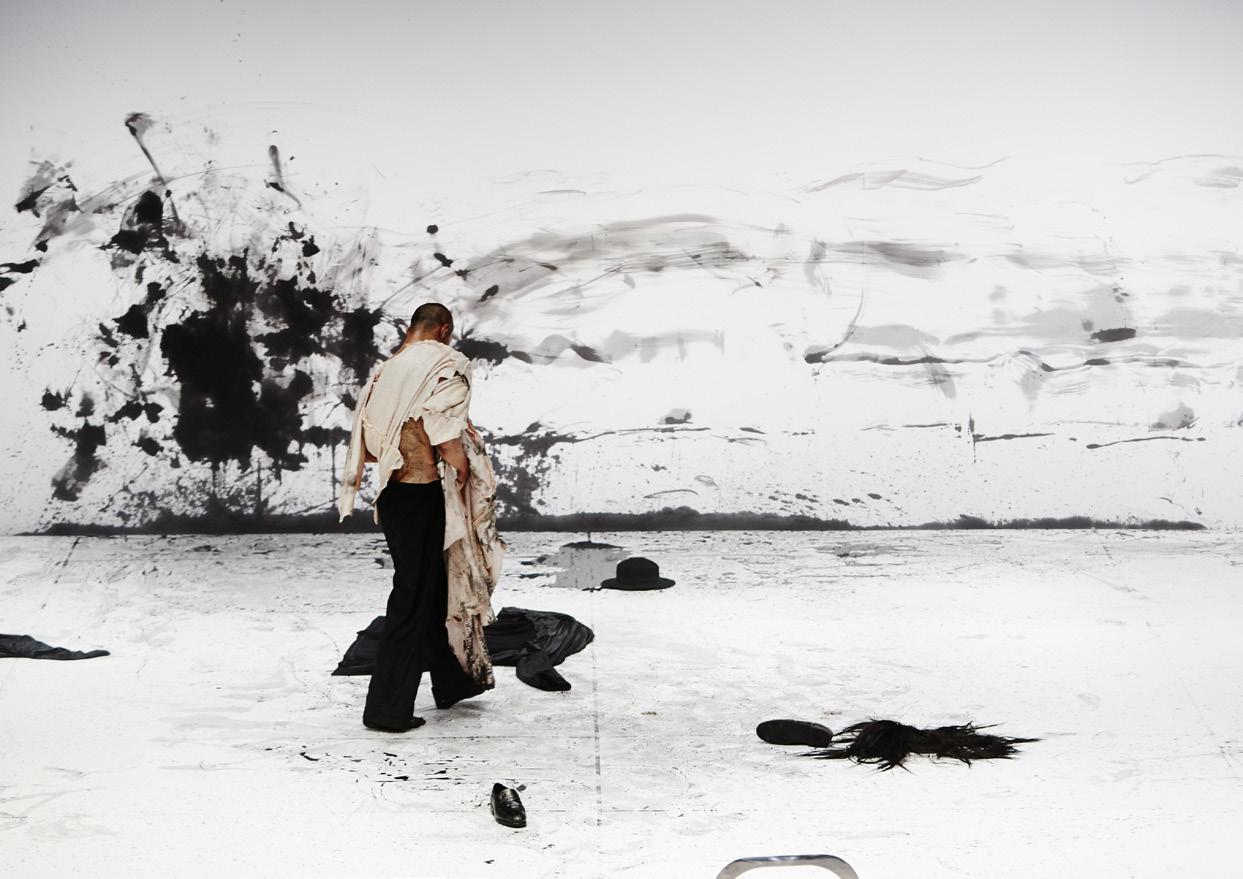Performance Info
KIM Hyun Tak (Theatre director. Head of MEDEA ON MEDIA entertainment.)
: A contemporary Grotowski, or a theatrical Quentin Tarantino
How did you get into the theatre scene?
It wasn’t a decision from lots of thinking. I was shocked because my teachers told me I was not talented enough to act. They pointed out a few things and I only thought about them and trained myself for the next year. My thoughts even went ‘If actor is theatre itself, and theatre means and should exist for the encounter of actor and audience, then what should I do here?’
When and how did you take an interest in working as a director? I’m also curious when you started to work on adapting and deconstructing classics.
My interest in acting didn’t last long, maybe because I could foresee what I needed to do to be good and what appeals to the audience. I might have seemed aloof, and my professor had me direct the seniors’ thesis project. It took me a lot more effort than all my hard work for a year in acting. Without realizing I became absorbed in that project, finding directing interesting. Adapting classical works started with Samuel Beckett’s Endgame. It was too boring to stage it as it was, so I turned it into a funny story in my own way.
You have a distinctive way of approaching or directing a play.
Originally I wanted to stage plays as they are. Then I realized I am not good at reading the plays as they stand. As I read along, I would imagine how to stage or structure a scene. But going back to the play after that imagination, the text always seemed so dull. So I’ve never finished reading the play when I start directing. And if you read with your preconceived images, you’ll experience some inconsistencies. So from that stage on, I put the text aside and worked based on my ideas. I know how the story proceeds anyway. That is how I developed my current way of working, which is arranging and staging all my ideas. It naturally invites some elements that are not in the original.
It seems like you have an entirely different way of perceiving theatre. Same applies to how you’ve grown as a director.
Looking back now, I grew up like someone who is specialized for theatre-making. I spent a lot of time on my own since I was a kid, so I watched a lot of TV and somehow couldn’t really tell the difference between the world in TV and reality – I discovered very early the fun of creating an imaginary world on my own. I caused a lot of trouble, too, because I was inside its ethics and laws. As I grew up, I always looked for something to play with and continuously get influenced by media. I was and still am clumsy in learning about the world through books or text. I really love paintings and music, though. The question of ‘Why do I like and enjoy these things?’ leads to ‘Shall I stage these in this way?’
Your work has mainly involved reinterpreting well-known classics. What are your standards in choosing a play and the motif in it?
It’s actually quite simple. When the images in a semiotized text inspires me, it becomes theatre. I usually choose the plays that have been staged before. I choose to work on one if it speaks to me even if only slightly, and if it doesn’t, I don’t. Now my adaptations are moving further and further away from the original, and I believe the further you can go, the stronger the power of it is.
I’m curious how your process starts off.
There is nothing special. I just hold onto some things that came into my head for a long time. The play is restructured from those ideas. I start by asking ‘what if I am this character?’ I try to think even his or her internal thoughts. As for tough guy HAMLET (2008), for example, I wondered, if I were Hamlet, how I would think about my mom who had sex with my uncle and how I would look at such a relationship. For 10 girls, Choonhyang (2013), I thought of 10 different Choonhyang. It was a combination of two questions: ‘Why was Chunhyang-jeon written in that period?’ and ‘Why was the K-pop girl group Girl’s Generation formed?’ Moving away from something typical, I tried to consider in that work what people in that era might have wanted and what people of today might want now.
Wait, coming up with the title is your starting point?
Yes. When the title of the play gets linked with a performance I want to make, then it is not difficult to organize a big picture. MEDEA ON MEDIA (2011), too – I thought of ‘media’ just by looking at the title. It started with the idea that it might work well if I connect Medea and media and that I might have Medea reveal the violence in the medium of TV. I could already draw out from images from the title, and 6 scenes were conceived immediately.
How did you come up with Death of A Man, SALE (2011)? The concept was intriguing, to have the protagonist Willy running on a treadmill the entire hour.
I happened to see the film Death of A Salesman, and I found the moment of Willy leaving quite impressive. I felt the scene needed to be emphasized more but in the next scene we could already see his grave. In the original play, there are only a few lines about Willy’s death. I got an idea of depicting that moment like a kaleidoscopic flash. So I showed his last moment with him running gasping and panting. I wanted the audience to see the sweat and saliva dripping, skin and muscles wobbling, and blood and pulse fiercely running – I wanted to pour out the real images of life through body. That is why I had him running on a treadmill for an hour.
In bye cycle, you actively revealed your views on society and history. I got the impression that you stated more strongly about social issues unlike your previous works. Was it the influence of Sewol Ferry incident?
I am not interested in big events if they don’t inspire a title or an image. I thought mourning for the victims was different from creating a show. Even for bye Cycle (2014), my imagination was solely based on the title rather than the play’s context. I thought of an image, from the protagonist’s point of view, of riding a bicycle, from which I could link a character who is depending on his/her limited sight in the dark and history which is caught up with its own perspective. After that, I found ‘cycle’ and ‘bye’ from the English title ‘Bicycle.’ Only then I gained confidence to the question of whether I could bring a story of the past into a present one and I could develop it into a full piece.
What is the rehearsal process like?
We get together after reading the script and input comments and thoughts however we want. With those interpretations shared, I suggest my interpretation as the director. The most time-consuming stage is making the actors understand how I read the play. Then, we take an important scene and again start a conversation about the images they had. We discuss what important parts should be acted out and why certain things need to be done a specific way if they have to be done. Once we have an important concept and image, the rest is developed from the inspirations I get from watching the actors. Thus, the level of understanding in the first scene we rehearse is so important that it might determine the level of difficulty of the next rehearsals. Usually it takes time to work out the details.
I assume you have strong and distinct ideas and attitude toward actors, because you started your career as one.
Theatre is the encounter between audience and actors. The audience comes to theatres to get away from their daily life. In order to turn a theatre space momentarily into a different time and space, actors’ movements should not be in the realm of everyday life - the harder it is for the actors to use their bodies, the more the tremble with fear, the audience actually receives those emotions. Also, the physical basis of actors should be out of the norm to deliver the instantaneous change in the body. They should be quicker than normal people, with bigger breaths and gestures. It is important to build a body that can intensify the real energy. To sum up, I believe ‘actor’ is small theatre inside theatre. Actor is theatre that can replace theatre, for all elements of theatre –voice, expression, gesture, costume, etc.- are inside the actor.
What would other people think of your theatre? Are there any particular comments you remember?
Patrice Pavis, French theatre theorist, told me my work is very much similar to Grotowski’s early works. From what I know Grotowski, early in his career, considered a lot about how theatre can survive in relation to media and where we could find the value of theatre. I’m no different. Only, I’m more inclined to think that media and theatre should negotiate so that they can coexist in harmony. Audiences are used to the way of communication where one click gives them access to numerous images. Instead of rejecting contemporary media or solely emphasizing physicality in stage performances, maybe we also need a type of theatre that accepts and utilizes them. And a group of young critics who saw MEDEA ON MEDIA at 2017 Edinburgh Fringe Festival said that they recommend the piece if you like Quentin Tarantino’s films.
Production Details
- Director
KIM Hyun Tak
Reference
- E-mailsb.kimhyuntak@gmail.com












 PREV
PREV
.jpeg)
.jpg)
_(c)포스(FORCE).jpg)
_(c)장석현_코끼리들이 웃는다(SUKHYUN JANG_ELEPHANTS LAUGH).jpg)
.jpg)
.jpg)
_(c)한받(Hahn Vad).jpg)
_(c)비주얼씨어터 꽃(CCOT)(1).jpg)
_(c)봉앤줄 (BONGnJOULE)(1).jpg)
_(c)대한민국연극제 2019 (Korea Theater Festival 2019)(0).jpg)
_(c)몸꼴(Momggol)(1).jpg)
.png)
2018MODAFE_Taemin Cho (2).jpg)











